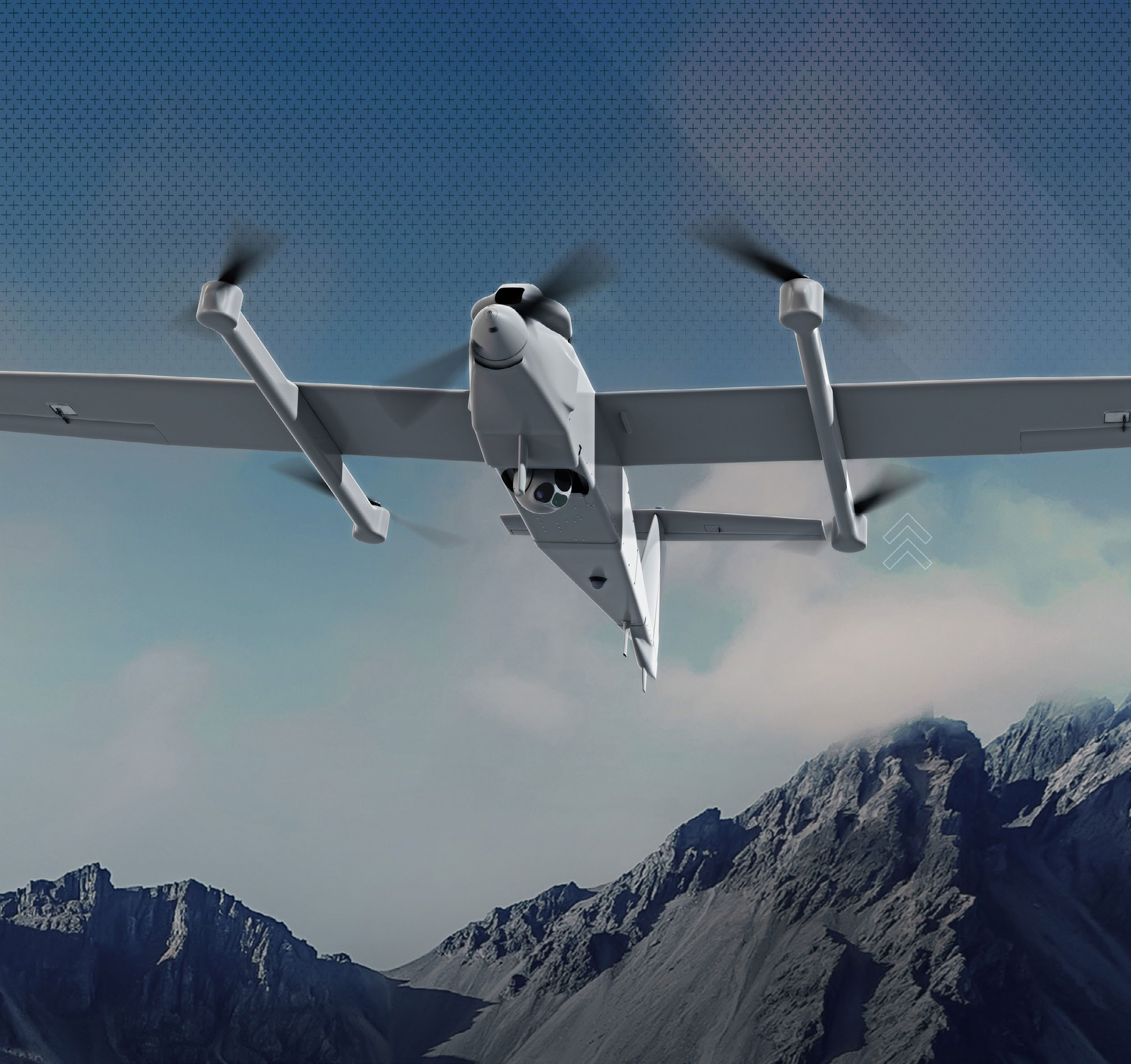
AeroVironment’s JUMP 20 has the capability of a Group 3 platform with a footprint and cost to operate more akin to Group 2 UAS. Illustration courtesy of AeroVironment.
In this Q&A with Philip Mahill, senior director, Medium UAS Business Development for AeroVironment, he discusses: the regional threat scenario, the latest news on the Army’s Future Tactical Unmanned Aircraft System (FTUAS) program, and the reasons why the company’s JUMP 20 VTOL unmanned system is suited to US needs in the FTUAS program and also UAE/Middle East needs to meet their specific threat scenarios.
Q: What’s the threat scenario in the Middle East that this group of UAS addresses?

Philip Mahill, senior director, Medium UAS Business Development for AeroVironment.
Mahill: The JUMP 20 is used for tactical ISR where two or more payloads are required. The JUMP 20 also flies using a beyond line-of-sight datalink for extended ranges.
The UAE and other Middle East nations benefit from the JUMP 20’s ability to provide reliable ISR in challenging climates and austere locations for military and security missions. Border and maritime security are important needs in the region.
Q: Why is the JUMP 20 the best choice to address those threats in the Middle East?
Mahill: The JUMP 20 is a robust and reliable unmanned aircraft system. Payloads are easily integrated onto the platform, so meeting customer requirements is much easier with the JUMP 20.
The JUMP 20 is employed in persistence ISR missions. Our customers require a platform that is available 24 hours a day, 365 days a year. The JUMP 20 is rugged and reliable, and meets those demanding mission requirements. The system itself has designed-in ease of maintenance, so it can be operated with minimal maintenance burden.
Q: You describe the JUMP 20 as having the capability of a Group 3 platform with a footprint more akin to Group 2. Explain.
Mahill: There is no bulky, expensive launch and recovery equipment needed to perform JUMP 20 missions. With many MUAS systems, launch and recovery equipment creates deployment, and logistics challenges for end users.
Conversely, JUMP 20 operators set a VTOL transition altitude and set navigation way points. Once commanded to launch, the VTOL system lifts the aircraft to the transition altitude, and the primary engine pulls the aircraft into fixed wing flight.
When approaching the landing area, the VTOL system kicks in as the aircraft transitions from fixed-wing to VTOL flight and lands. The process requires no stick and rudder control.
Q: JUMP 20 is also a proven solution at a competitive price. Tell us about its attributes.
Mahill: The JUMP 20 system can be transported on just a couple of pallets, and be assembled and ready to fly in 30 minutes. The user interface is simple and intuitive. The small footprint of the system allows the aircraft to get to austere environments, operate for short or long periods of time, and also be packed up or moved easily.
Q: Bring us up to date on the progress of the Army’s FTUAS increments.
Mahill: Increment 0 has been fielded with the US Army in Germany. Increment 1 aircraft have been delivered for testing to the US Army, and will later be fielded to a Brigade Combat Team in calendar year 2023. The Army can procure more systems under Increment 1, supporting early fielding to Brigade Combat Teams.
Increment 2 is expected to be awarded around the end of February. It is likely to be more than one company that will have to trace Army requirements to system capabilities. The effort will include design reviews, configuration reviews, a few off ramps, and eventually a selection for a program of record.
Q: What are the key requirements of FTUAS Inc 2 and how does JUMP 20 meet or exceed them?
Mahill: Some key requirements for FTUAS Inc 2 are to have a mission open system architecture (MOSA) compliant system, and be compatible with other Army investments. The JUMP 20 provides an open hardware and software architecture, so interchanging datalinks, cameras, onboard computers, etc., to meet new or emerging requirements is much easier on the JUMP 20.
The Army is investing in several areas including mission computers and transponders so when those investments have matured they can be integrated on the platform, as well.
Q: Does JUMP 20 have the ability to operate in contested environments?
Mahill: Yes. The JUMP 20 is able to navigate using internal navigation sensors.
Q: The ability to incorporate third-party payloads is key in order to meet evolving threats. Describe your ability to do that with JUMP 20. Can you name partner systems you’ve integrated, such as a Wescam EO/IR system?
Mahill: We have integrated payloads from CloudCap, Trillium Engineering, HoodTech, L-3 Wescam, and others. We are able to integrate payloads that our customers have, or find a payload that meets specific requirements. As payloads are developed or improved upon, we are able to bring the best capability to customers.
Q: What will you be displaying at IDEX?
Mahill: We will have a JUMP 20 on display, as well as our other unmanned platforms such as our Puma systems, tactical missile systems, and ground robots.
Q: Final thoughts?
Mahill: JUMP 20 is the most capable and versatile UAS in the Group 2/3 category. We work diligently to meet our customers’ objectives and deliver more ISR per hour than competing systems.
The JUMP 20 should be the platform of choice for Middle Eastern countries. It’s a proven platform in the Middle East weather, it’s easy to operate and most importantly it brings Group 4 capability to the table at a small Group 3 price tag.





















